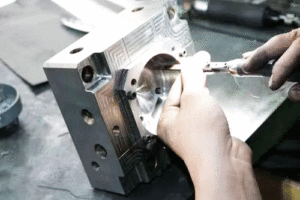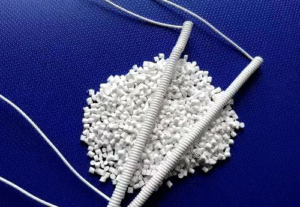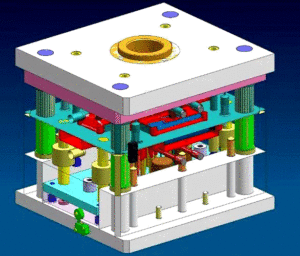
Polishing Treatment for Plastic Molds
Polishing Treatment for Plastic Molds With the widespread application of plastic products, such as daily-use items and beverage packaging containers, there is often a requirement
Mold temperature refers to the surface temperature of the mold cavity in contact with the product during the injection molding process. Because it directly affects the cooling rate of the product in the mold cavity. And that has a great impact on the internal performance and appearance quality of the product.
Higher temperature can improve the fluidity of the resin. Besides, it generally makes the part surface smooth and shiny and improves the surface beauty of glass fiber reinforced resin parts. It also improves the strength and appearance of the fusion line.
For the etched surface, if the mold temperature is low, the melt will be more difficult to fill to the root of the texture. Then, it makes the surface of the product appear shiny and can’t “transferred” the real texture of the mold surface. While increasing the mold temperature and material temperature can make the product surface get ideal etching effect.
The formation of internal stress in molding is basically caused by different thermal shrinkage rates during cooling. After the product is molded, its cooling gradually extends from the surface to the inside. The surface first shrinks and hardens, and then gradually to the inside. In this process, the difference in speed and shrinkage results in internal stress.
When the residual internal stress in the plastic part is higher than the elastic limit of the resin, or under a certain chemical environment, cracks will occur on the surface of the plastic part. Research on PC and PMMA transparent resins shows that the residual internal stress is in a compressed form on the surface layer and a stretched form in the inner layer.
The level of surface compressive stress depends on the cooling condition of the surface. The cold mold quickly cools down the molten resin, which causes the molded product to produce higher residual internal stress. Mold temperature is the most basic condition for controlling internal stress. A slight change of mold temperature will greatly change its residual internal stress. Generally speaking, the acceptable internal stress of each product and resin has its minimum mold temperature limit. When molding thin walls or longer flow distances, the mold temperature should be higher than the minimum for general molding.
For the control of mold temperature, we should determine the temperature difference between the male mold and the female mold, the mold core and the mold wall, and the mold wall and the insert according to the structural characteristics of the product. So that it can control the difference in the cooling and shrinkage speed of each part of the mold. After demolding, it tends to bend in the traction direction on the higher temperature side to offset the difference in orientation shrinkage. And to avoid warping and deformation of the plastic part according to the orientation law.
For plastic parts with a completely symmetrical structure, the mold temperature should be kept consistent accordingly. So that the cooling of each part of the plastic part is balanced.
The low mold temperature accelerates the “freezing orientation” of molecular. And it increases the thickness of the frozen layer of the melt in the mold cavity. At the same time, the low mold temperature hinders the growth of crystals, thereby reducing the molding shrinkage of the product. On the contrary, if the mold temperature is high, the melt will cool slowly. What’s more, the relaxation time will be long, the orientation level will be low. Meanwhile, it will be beneficial to crystallization, and the actual shrinkage of the product will be greater.
Especially for crystalline plastics, if the product is molded at a lower mold temperature, the molecular orientation and crystallization are instantly frozen. When a use environment with a relatively high temperature or secondary processing conditions, the molecular chain will partially rearrange and crystallize. And that makes the product deform at even far below the heat distortion temperature (HDT) of the material.
The correct way is to use the recommended mold temperature close to its crystallization temperature. Then, make the product fully crystallized in the injection molding stage. And avoid this post-crystallization and post-shrinkage in a high-temperature environment.
In short, mold temperature is one of the most basic control parameters in the injection molding process. Moreover, it is also the primary consideration in mold design. Its influence on the molding, secondary processing and final use of the product cannot be underestimated.

Polishing Treatment for Plastic Molds With the widespread application of plastic products, such as daily-use items and beverage packaging containers, there is often a requirement

Injection Molding Techniques for TPE and TPR Injection Molding Techniques for TPE and TPR 1. Dry the TPE and TPR material before injection molding It

Winter Maintenance Measures for Injection Molding Machines As winter approaches and temperatures gradually drop, a cold chill envelops the earth. While ensuring personal warmth, it

Assessment Regulations for Mold Trial Exceeding 3 Times Assessment Regulations for Mold Trial 1. Purpose The purpose of this regulation is to standardize the work of